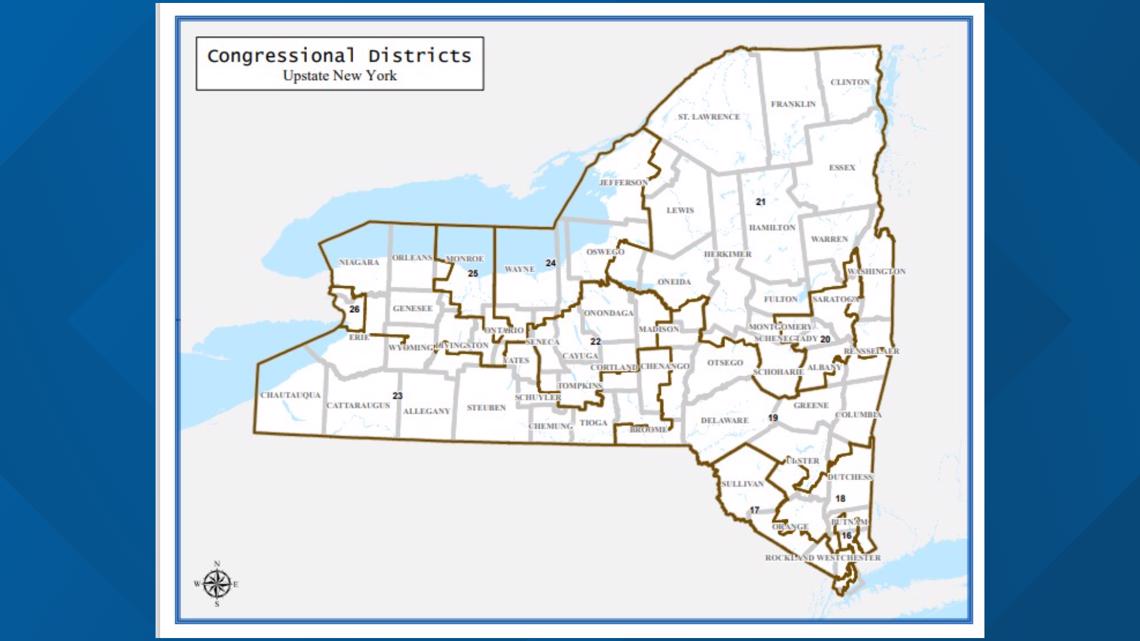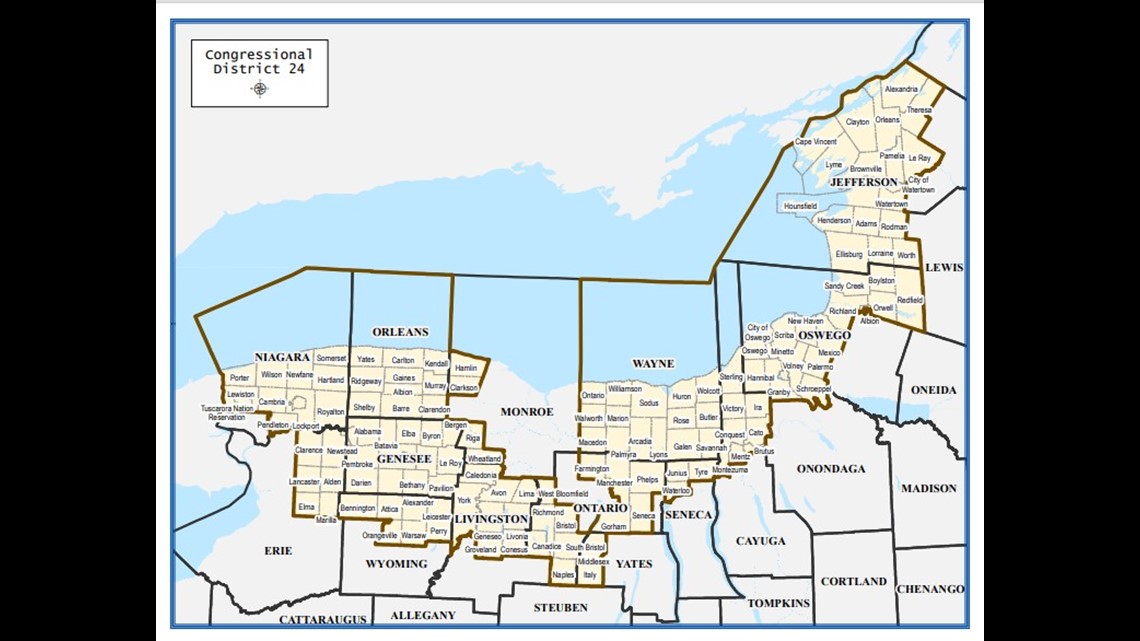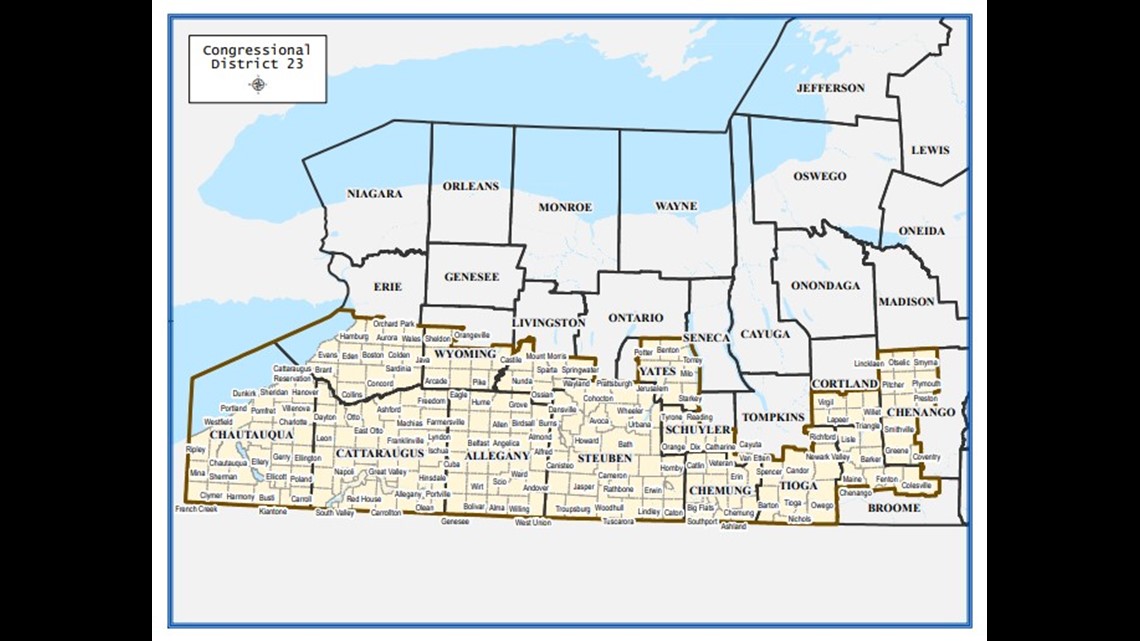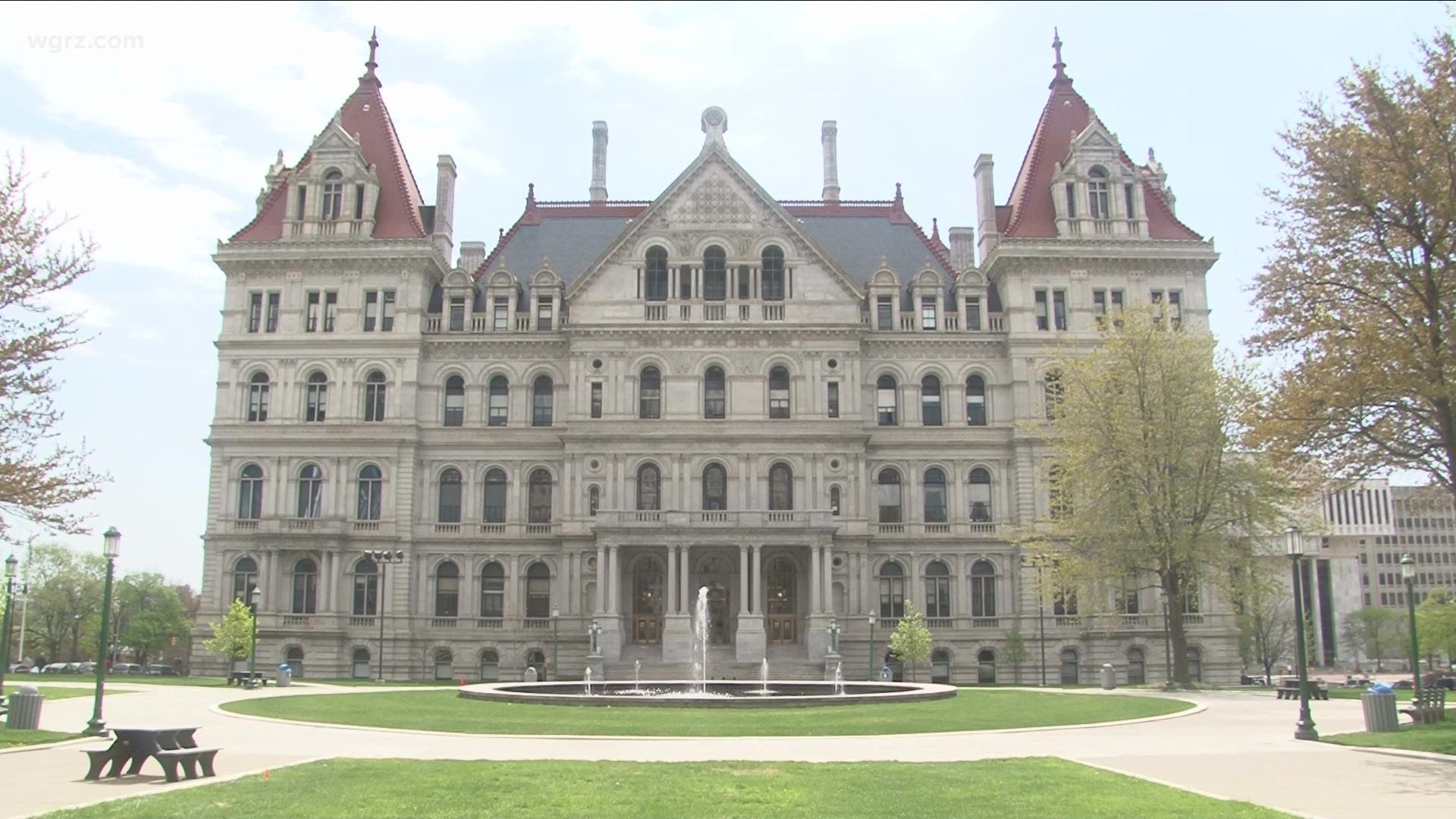BUFFALO, N.Y. — A plan released by the State Legislature's Democratic majority on Sunday could redefine what New York's congressional districts look like for years.
The state will be losing a seat in Congress going from 27 districts down to 26 because of population loss in the most recent U.S. Census.
Any and all redistricting plans must be approved by the entire state legislature, Democrats, and Republicans before being implemented. But regardless of which party's plan is selected or if a compromise deal is made, it will have vast implications for New York voters.
The elimination of the 27th Congressional District currently held by Congressman Chris Jacobs (R) in the Democratic Majority's plan would lead to the splitting of Erie County into three congressional districts, instead of two.
U.S. Rep. Brian Higgins' (D) 26th District would largely stay the same on the potential map, but the 23rd and 24th Districts would see a lot of change.
The 23rd District, held by retiring Southern Tier congressman Tom Reed (R), would add portions of southern Erie and Wyoming counties to its boundaries and would include towns such as Orchard Park, East Aurora, Springville, Arcade, and Gainsville, which were previously in the 27th District.
In the Democratic majority's plan, the 24th Congressional District would cover a massive swath of the state stretching from Lewiston all the way to Watertown. The entirety of Genesee and Orleans counties and a portion of eastern Erie County, including Alden and Clarence, could included if the map is approved.
Lawmakers are expected to discuss the proposal in Albany this week, but New York GOP Chairman Nick Langworthy was quick to respond Sunday.
"These maps are the most brazen and outrageous attempt at rigging the election to keep Nancy Pelosi as Speaker. Voters spoke loud and clear in rejecting their partisan power grab last year and in 2014, but Democrats are circumventing the will of the people," Langworthy said in a statement.
2 On Your Side did reach out to New York Democratic Party Chairman Jay Jacobs for his response Sunday but did not immediately hear back.
As Langworthy mentions, seven years ago, New Yorkers approved a statewide resolution that sought to eliminate the legislature's oversight of redistricting. An independent commission was selected to re-draw the lines but after months of work, the five-Democrat and five-Republican member commission failed to reach a consensus on a single map.
Instead, the commission submitted two maps, one Republican and one Democrat, leaving the power to choose once again with lawmakers.
The following maps of the 26th, 24th, and 23rd congressional districts are from the New York State Democratic Majority's proposal:









